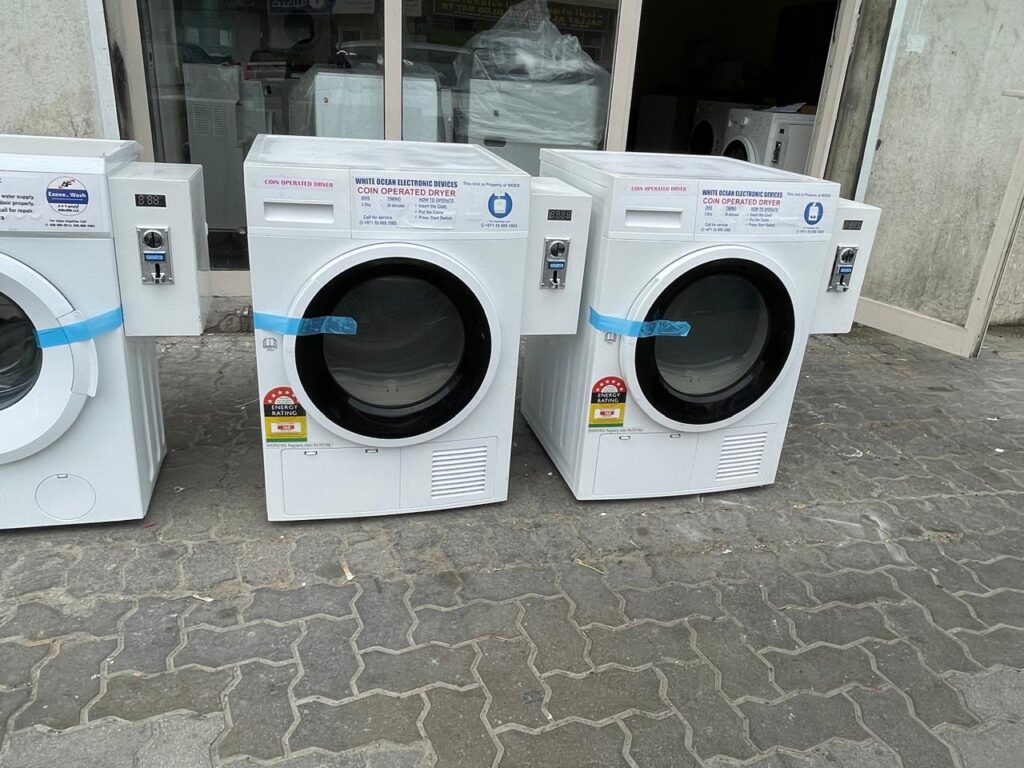COIN OPERATED DRYERS

Coin-operated dryers are a great addition to shared laundry facilities, as they provide convenience and generate steady income for facility owners. They work similarly to coin-operated washing machines, requiring users to pay for each drying cycle. Here’s a rundown of how these systems operate, the components involved, and considerations for setting them up.
Key Components of a Coin-Operated Dryer System
Coin Acceptor or Validator:
- Accepts coins, tokens, or in some systems, even digital payments like credit cards. The coin validator confirms the denomination and ensures only valid coins start the dryer.
Coin Box Compartment:
- A secure box where the accepted coins are collected. It’s typically locked and constructed to resist tampering and unauthorized access.
Control Interface:
- This allows users to select drying times or cycles and includes a start button that activates once the required payment is made.
Drying Timer:
- The dryer operates for a preset duration based on the amount inserted. If a user wants additional drying time, more coins must be added.
Security Locks and Protection:
- Many coin boxes come with reinforced locks and anti-theft mechanisms to safeguard the coins inside. In some cases, the whole compartment is bolted to the dryer for added security.
Error Display:
- Modern systems often come with a small screen to show remaining time, alert users to errors (like jams), and sometimes provide additional settings.